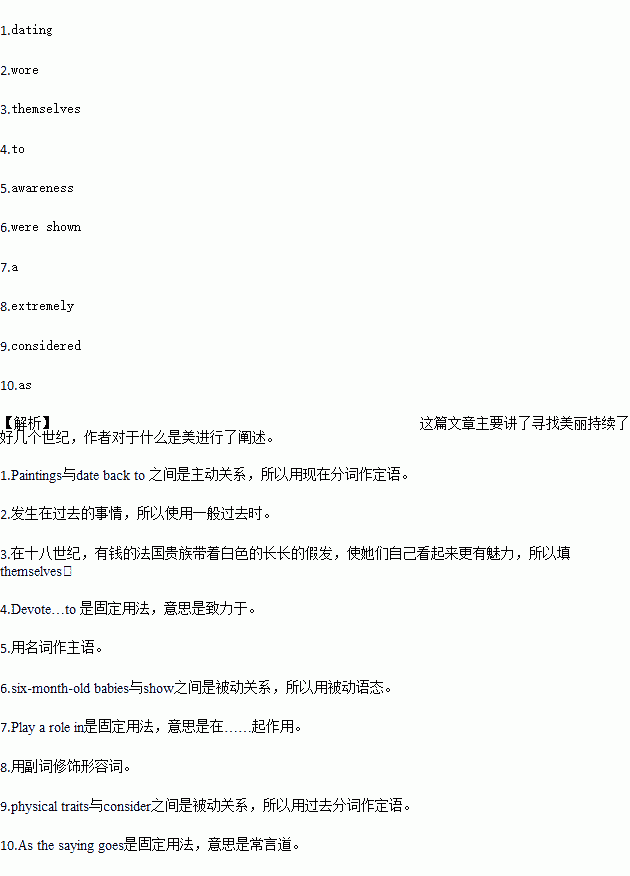题目内容
The search for beauty lasts centuries.Paintings of Egyptians1.(date) back to 4,000 years show both men and women painting their nails and wearing make-up.In the 18th century,wealthy French noblemen2.(wear) wigs(假发)of long and white hair to make3.(them) attractive.Today people continue to devote a lot of time and money 4.their appearance.
But what exactly is beauty?It's difficult to describe it clearly,and we know it when we find it.Our5.(aware) of it may start from an early age.In a study,six-month-old babies6.(show)a series of photographs.The faces in the pictures had been rated by attractiveness.Babies spent more time looking at the attractive faces than the unattractive ones.
For better or worse,beauty plays7.role in our life.But it is8.(extreme)difficult to describe exactly what makes a person attractive to another.Although there are certain physical traits9.(consider) universally appealing,it is also true that beauty does not always keep to a single standard.Beauty really is,10.the saying goes,in the eye of the beholder(旁观者).
 口算题天天练系列答案
口算题天天练系列答案
